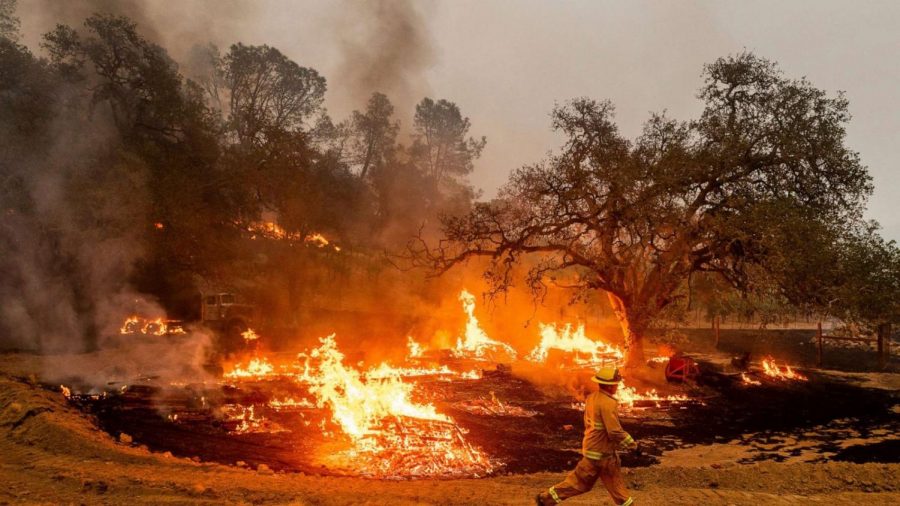West Coast Wildfires
October 2, 2020
Have you wondered over the past few days about how it got quite chilly and maybe you even noticed a bit of a haze in the air and thought to yourself “what’s that about?” Well, the answer isn’t exactly what you might be expecting, as it could be credited to an event on the other side of the country. The California forest fires have been a prevalent issue for decades, but the fires for this year have been some of the most intense and fatal on record. In fact, 5 out of the 6 largest forest fires in California’s history have happened in the past two months alone (pretty on-par with the rest of 2020) [via Sacbee]. The fires themselves have been devastating to the entirety of the west coast and midwest, but many of the side effects of the fires are becoming just as dangerous. Los Angeles County has reached temperatures of over 120° and Death Valley has seen temperatures as high as 130° (if confirmed, would be the highest temperature reliably recorded on record), the smoke has become a massive issue in the surrounding states contributing to the rising casualty count, and an eerie red glow has been seen during the daytime across states spanning from Arizona to Oregon [NY Times].
The West Coast is no stranger to wildfires and in just the past two months Oregon has seen roughly 300,000 acres burnt and California has seen over 2.6 million acres worth of fires, resulting in mass property loss, hundreds of people displaced from their homes, and 26 fatalities [The Hill and Fire.ca]. These statistics only account for the actual fires themselves, the smoke is estimated to be responsible for another 1200-3000 deaths [Mercury news]. The impacts aren’t just limited to the Pacific Northwest region though; most of the midwest is seeing firsthand the results of the tons of smoke and ash being released into the atmosphere every day with temperatures dropping and a haze being reported in the atmosphere as far east as NYC. The smoke shouldn’t raise too much alarm for the general population, but anyone with pre-existing conditions, young children, and any persons 65+ should be concerned about avoiding any and all smoke exposure (everyone should avoid smoke exposure if possible though, extended exposure can cause long-term lung effects and be deadly even to otherwise healthy individuals) [Fire.ca].
Efforts are being made to contain and bring an end to these fires and most are 75+% contained, but many are still continuing to spread. This situation reinforces the necessity of fire-prevention education and why it is important to understand how and when to report a fire. One of the major fires this season was started by fireworks that were a part of a gender reveal party, and in previous years fires have been started by downed power lines, lit cigarette butts, and even a case as unlikely as a flat truck tire where the rim scraped the pavement and sparks flew off road and ignited the surrounding brush. Studies have shown that a majority of forest fires are caused by some sort of human interaction with the environment, which is why we need to be educated on how to be careful about these matters. It may seem like a stretch to think that we can help make a difference from here, but the next time you go camping just be sure to fully douse your fire, report any unattended fires you see, don’t set off fireworks near forests or brush, and pay attention to your local fire threat warnings,parks and campsites will almost always have a sign that is updated daily/weekly. Most of these rules are a given, but being conscious of these things can help prevent things like this from happening again in the future.

